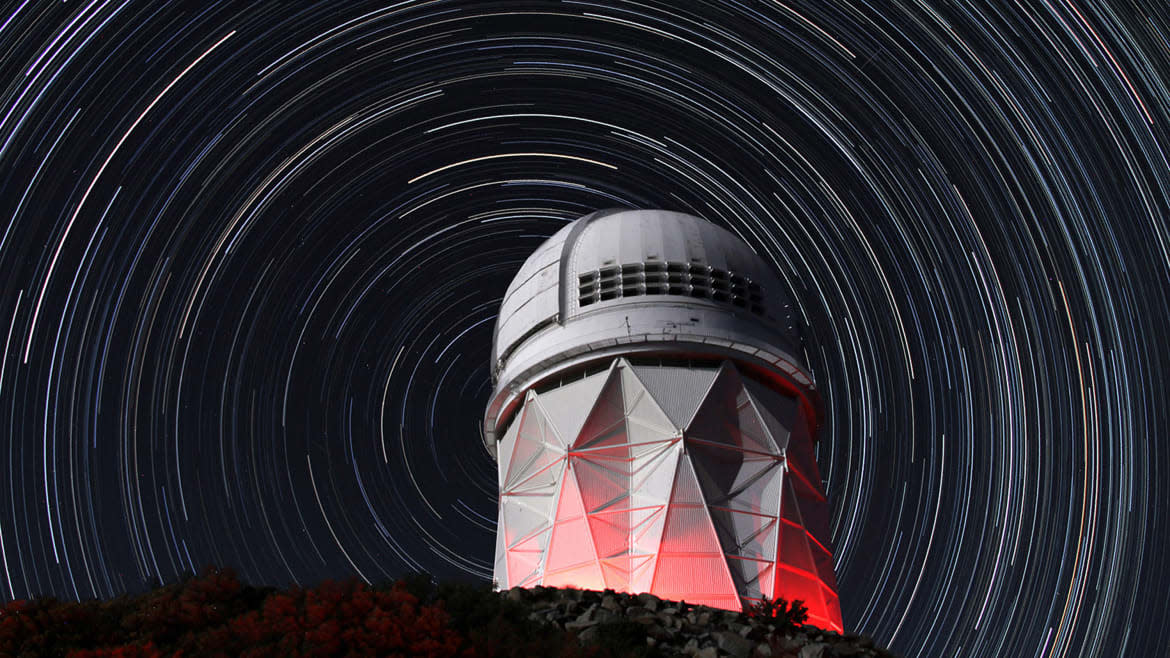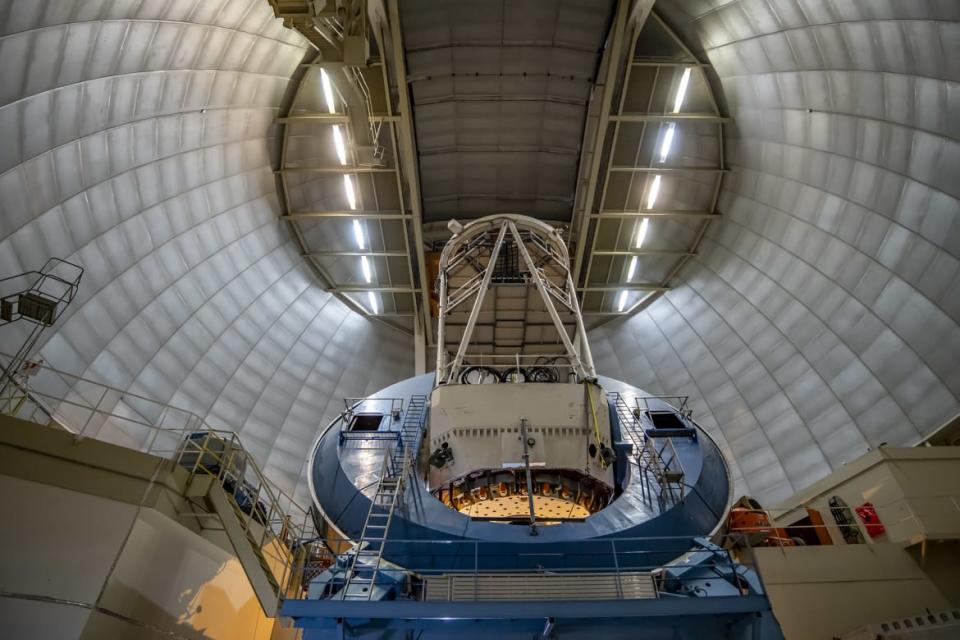Scientists Are Making a 3-D Map of the Universe Going Back 11 Billion Years

Nearly 500 scientists from 13 countries have come together in an ambitious new effort to map… well, pretty much everything.
As part of a $70 million program funded mostly by the U.S. Department of Energy, the scientists have converted an old telescope in Arizona into a high-tech new sensor that can detect light from stars as far as 11 billion light years away.
The objects, as they appear on Earth, are as old as 11 billion years and offer a tantalizing glimpse into the early eons of our roughly 14-billion-year-old universe.
The data from the Dark Energy Spectroscopic Instrument telescope, situated at Kitt Peak National Observatory around 50 miles southwest of Tucson, could help scientists to build a model of no fewer than 35 million galaxies comprising around half of the observable universe.
“We will be making a 3D map of the universe going back 11 billion years,” Michael Levi, DESI project director, told The Daily Beast.
The whole point of this epic feat of stellar cartography is to try to understand why the universe keeps expanding as quickly as it appears to be doing. The answer to that question could upend our conception of how the universe works.

Kitt Peak National Observatory in Tucson, Arizona.
“The map will be so precise that we will be able to see the details of the expansion history,” Levi explained. “Cosmologists once though that the universe might collapse in on itself, but an unseen energy is driving the universe apart at an accelerating rate. We should be able to see this phenomenon when it turned on in the early history.”
That “unseen energy,” which weirdly doesn’t emit radiation, has a name. Scientists call it “dark energy.” It’s got a more substantial cousin they call “dark matter.” These dark twins represent one of the most vexing mysteries in all of astronomy. No one really knows what they are or whether they really even exist.
All they know is that something besides what they can see with their eyes makes up a majority of the universe’s mass. And something is driving that mass farther and farther apart.
“Dark matter and dark energy together make up about 95 percent of the total mass/energy in the universe,” Pieter van Dokkum, a Yale University astronomer, told The Daily Beast via email. ”Because they are so dominant we think that dark matter and dark energy have been driving the formation of structure (and galaxies, and ultimately planets like Earth) throughout cosmic history.”
But that’s about as much as we know for sure. “No dark matter particle has been directly observed yet,” Francisco-Shu Kitaura, an astrophysicist at Germany’s Leibniz Institute for Astrophysics and a member of the DESI team, told The Daily Beast. “We need to understand and further characterize this mysterious matter.”
The 12-foot-wide DESI telescope, which weighs 11 tons and rises 90 feet above the floor of the Arizona observatory, combines the basic structure of an older telescope, dating back to 1973, with 5,000 new fiber-optic sensors, each attached to a robotic arm that precisely positions the sensor to gaze at a particular distant galaxy.
Its thousands of “eyes” twitching in different directions, DESI can scan 5,000 different galaxies every 20 minutes. Technicians began installing the new components in early 2018. Testing wrapped in late October. Regular surveys of the 35 million galaxies is slated to begin in early 2020.
DESI’s sensors feed data into spectrographs that separate the scans into three different color bands. The idea is to measure “redshift,” the shift in the color of objects to longer, redder wavelengths as the objects move away from an observer. “Redshift is analogous to how the sound of a fire engine’s siren shifts to lower tones as it moves away from us,” the DESI program explained on its website.
By measuring redshift, scientists can gain a sense of how, and where, the universe is clustering and expanding. “DESI will permit us to see this in much more detail covering volumes large enough to test the nature of gravity and the dark-energy component,” Kitaura said. “Our forecasts tell us that we will unveil the recipe of dark energy.”
The DESI team is bracing for profound revelations about the nature of the universe. But these profound answers might just lead to even more profound questions, van Dokkum pointed out. DESI’s 3D map of the universe could help us to begin defining dark energy “just like you could identify a gull by the fact that it drops clams on rocks, even if the gull is flying in the distance.”
“The problem here is that we're studying this very indirectly,” van Dokkum added. “imagine only seeing the dropped clam shells and having to figure out that there was a bird and what it looked like.”
Part of the problem is that DESI, for as wide as its high-tech gaze is, only scans half the sky and can’t peer at all into the first two or three billion years of the universe’s infancy. Two other new telescopes, one each in Chile and South Africa, are in development to scan the universe’s darker, more distant past and to fill the gaps in the sky that DESI can’t see.
DESI’s leaders also hope to eventually add more sensors to other telescopes and stare even harder at the universe’s darkest, most mysterious regions, potentially sketching an even more detailed map of everything that has ever existed.
“There are a lot more galaxies out there to be measured,” Levi said. “My colleagues already have on the drawing board plans for bigger telescopes and even more robots.”
Get our top stories in your inbox every day. Sign up now!
Daily Beast Membership: Beast Inside goes deeper on the stories that matter to you. Learn more.

